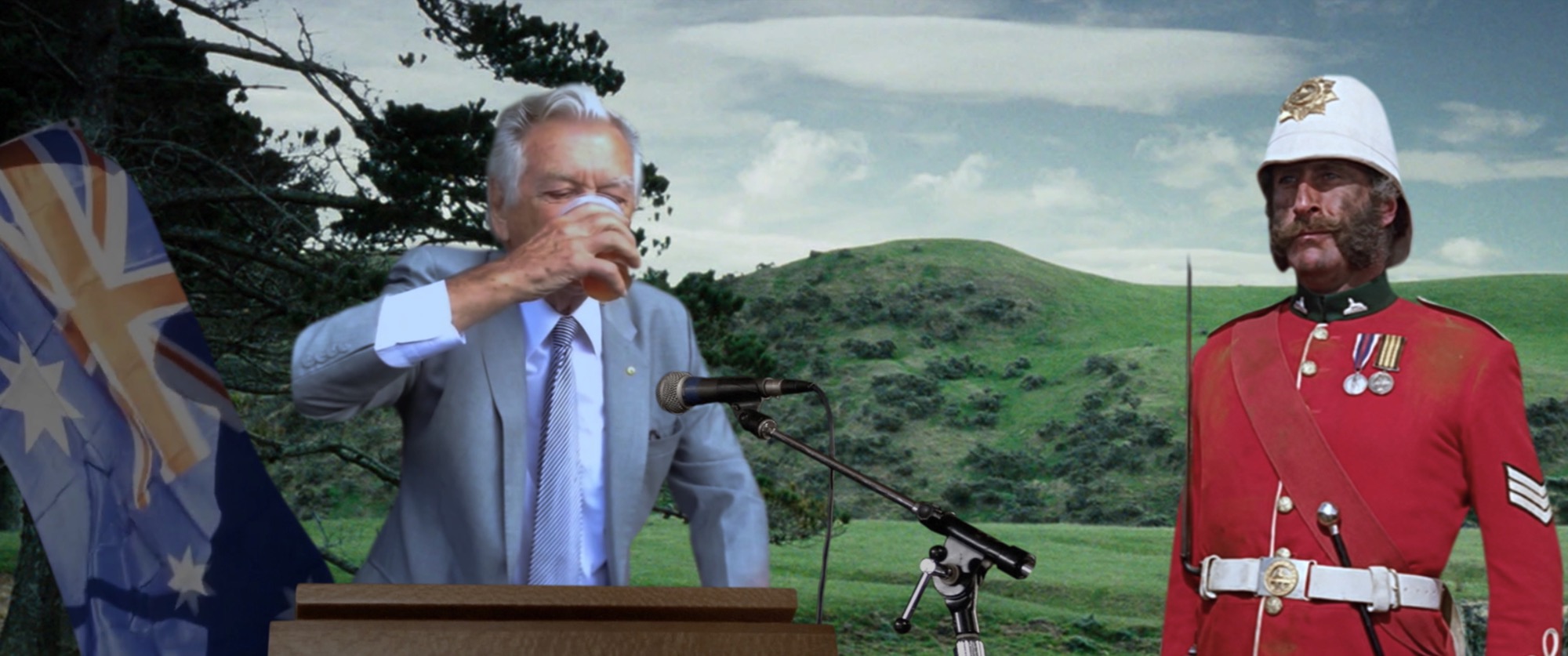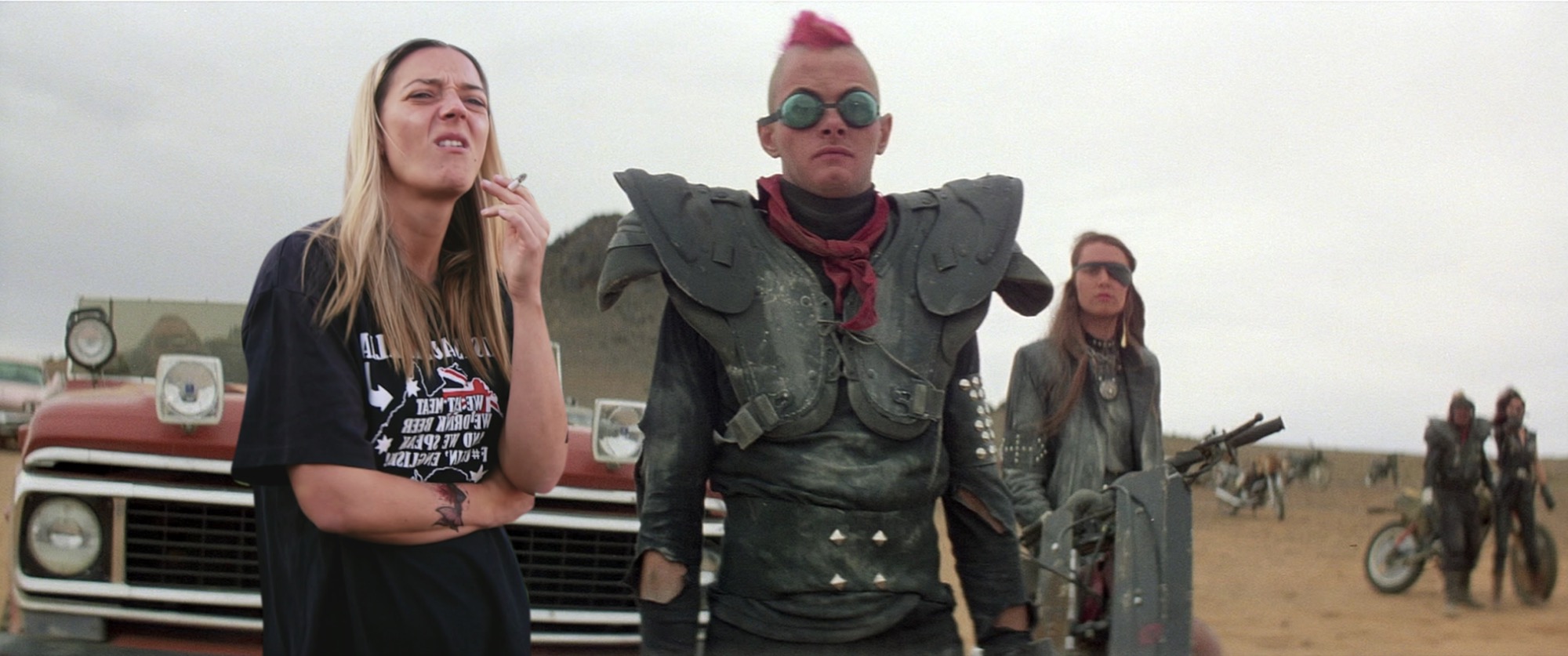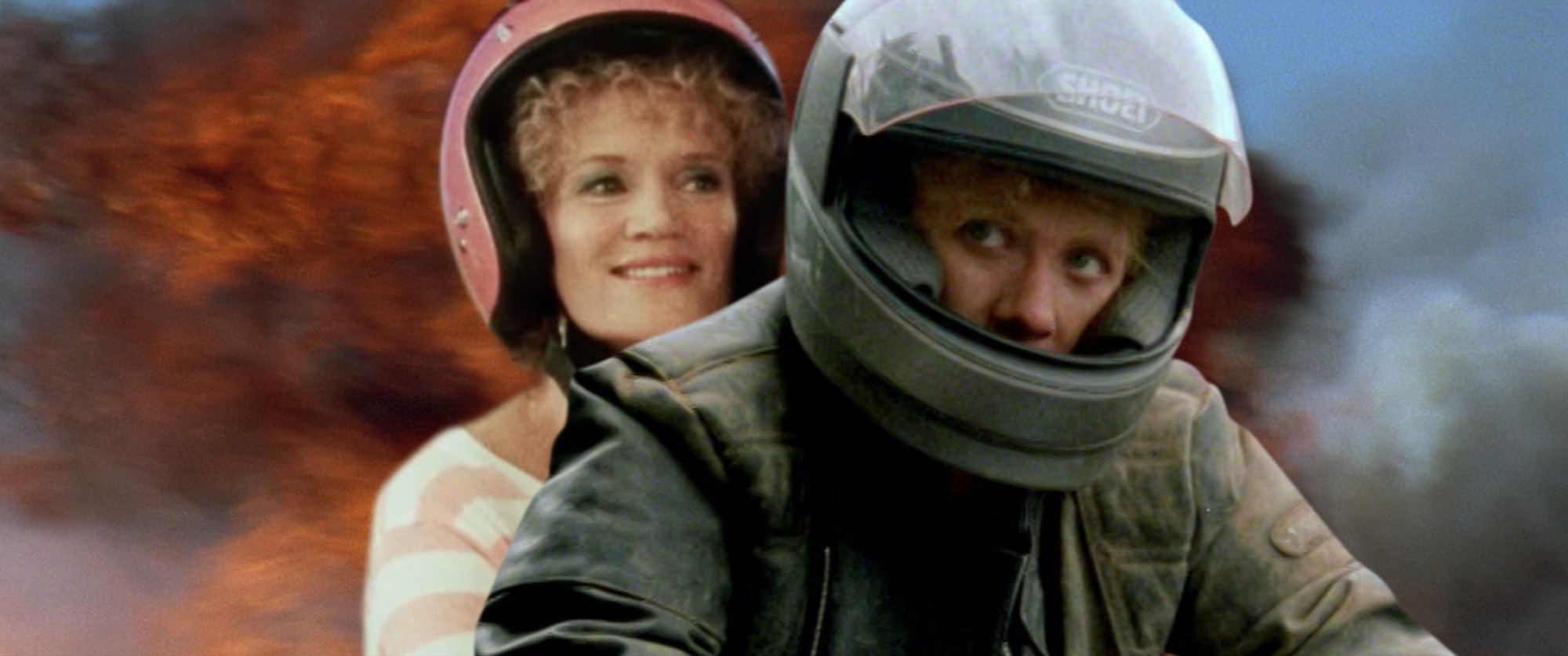Soda_Jerk: TERROR NULLIUS
Kate Warren
TERROR NULLIUS, the “controversial” new film by artist–filmmakers Soda_Jerk (Dominique Angeloro and Dan Angeloro) opens with a slightly distorted rendition of “Advance Australia Fair”. It appropriately sets the scene for what is to come, as the film takes its viewers on a wide-ranging journey, in three acts, which emphasises the dark underside to Australian popular culture and politics. Filtered through the lens of Australia’s cinematic and televisual histories, the artists sample, edit and recombine hundreds of moments from film and television into their 55-minute film, a frenetic road-trip through Australian political and social affairs.
Only a few years ago, I would have described this creative form as a “mashup”, however the term now seems painfully dated in our hyper-literate, digitally adept, super-sharing culture. From memes and GIFs, to “post-internet art”, to the multi-layered allusionism of television shows such as Stranger Things (2016–), it can feel like everything is a remix nowadays. In fact, mashups are more than simply mainstream; they have been legitimised and institutionalised as distinct forms of discourse and critique. The ABC’s video editor Huw Parkinson, for instance, won a Walkley Award in Multimedia Storytelling for his clever remix videos of political commentary; and the “audiovisual essay” has become its own distinct mode of analysis in film and media studies.

If the term mashup feels dated, TERROR NULLIUS is a reminder that the practice retains contemporary currency and power. The discursive power of the remix is, essentially, a simple one; it relies on the interplays between similarity and difference that construct our visual culture. By bringing together two previously unrelated images, sounds or cultural objects – and placing them in proximity to each other – previously hidden meanings and truths can be revealed. The strategy can be traced across art and film histories, in particular to the techniques of collage and (photo)montage favoured by European avant-gardes. Having refined their craft of quoting, mixing and repurposing since the early 2000s, Soda_Jerk are highly adept at this. For example, by exploiting the filmic standard of shot–reverse shots, they queer the logic of Australian masculinity, as the Man from Snowy River (Tom Burlinson) rides through the Australian bush and tips his hat to Heath Ledger in Brokeback Mountain (Ang Lee, 2005). In TERROR NULLIUS Crocodile Dundee (Paul Hogan) becomes the victim rather than the rescuer of his female co-star (Linda Kozlowski), while Babe the pig shepherds a herd of demonic sheep to attack a group celebrating the 1988 Bicentenary.
TERROR NULLIUS uses its remix logic to undermine Australia’s national mythologies and cultural icons, but it also tracks its contemporary political moment very deliberately. An early sequence appropriates the final scene of Geoffrey Wright’s infamous film Romper Stomper (1992). Yet by intercutting this violent scene with Michael James Rowland’s lesser known film Lucky Miles (2007), Russell Crowe’s skinhead rage is transferred directly to the arrival of asylum seekers on an Australian beach. The impact is immediate and unambiguous, laying the groundwork for TERROR NULLIUS ’s wide-ranging commentary, which also addresses the denial of Australia’s frontier wars and massacres; continuing Indigenous demands for self-determination; misogyny and violence against women; and LGBTQIA+ rights. The artists use characteristic humour to articulate their critique. Subtitling and reworking Skippy as a feminist who urges young Sonny to “speak truth to power” was particularly amusing.

While Soda_Jerk have always had a political edge, their previous works have been more concerned with the “politics of images” than the “images of politics”. With TERROR NULLIUS the artists have developed this position, more overtly tackling the entanglement between Australia’s national mythologies and political realities. TERROR NULLIUS ’s dense amalgamation of cultural references is seeded with samples taken from news footage and figures of recent politics. Given our supposed “post-truth” era this hardly feels like a radical approach; yet it seems to have been at the crux of the “controversy” that engulfed the film days before its premiere. Soda_Jerk’s film had been funded by the Ian Potter Cultural Trust; it was the third in a series of high-profile moving image commissions, in partnership with the Australian Centre for the Moving Image. Yet only a few days before its scheduled launch, the artists announced in a long Facebook post that the funding body had withdrawn their endorsement. In a follow-up statement the Trust described TERROR NULLIUS as “a very controversial piece of art”; the artists say that the organisation called it “un-Australian”. All mentions of TERROR NULLIUS have seemingly been wiped from the Ian Potter Moving Image Commission website, and the Trust has refused to be associated with any promotional publicity.
The Trust has justified its actions by confirming that it will meet all financial obligations (the commission is worth $100,000) and that it respects the artists’ right to exhibit the piece. While it involves no censorship or withdrawal of funding, its decision nonetheless remains concerning and raises important questions about what constitutes “controversial art” in our contemporary political climate. The Trust’s assessment of TERROR NULLIUS is ironic and self-defeating, because in attempting to wipe its hands of association, it has created a much larger controversy than the film would have likely generated independently. Because while TERROR NULLIUS offers biting critique and satire, it doesn’t really tell us anything that we don’t (or shouldn’t) already know. It is more of a timely reminder than an exposé of the latent prejudices and uncomfortable truths in Australian social, political and cultural life. Perhaps this reflects the strengths and limitations of remixes in general. They are highly effective at revealing the ways that certain narratives and beliefs repeat and persist in society. But in relying so innately on pre-existing cultural symbols, TERROR NULLIUS ’s confrontation of the urgencies of our present political situation is in fact less pointed than it could have been.

There are controversial parts to the film, undoubtedly. Conservative politicians Tony Abbott and Pauline Hanson are aligned with the Lord Humungus and his gang from Mad Max 2: The Road Warrior (George Miller, 1981), and consequently they meet with untimely demises at the hands of the boomerang-throwing Feral Kid. But one suspects that the perceived controversy of TERROR NULLIUS lies not so much in these moments, but rather in the fact that the artists have staked a defined ideological position. Given the artwork’s title, this could have hardly been surprising. But it raises the question: if a private funding body such as the Ian Potter Cultural Trust does not want to be seen to endorse the particular politics of this work, can it support any artwork that asserts a clear political position?
TERROR NULLIUS has unwittingly exposed an environment where public institutions, private philanthropic organisations, and individual artists inhabit a complex and at times fraught terrain. This has implications for artists tackling political and ideological subjects, particularly as commissioning strands have come to dominate the landscape of contemporary art. ACMI alone has three ongoing commissioning programs (alongside the Ian Potter Commission they award the Mordant Family VR Commission, and the Artbank+ACMI Commission). Indeed, with so many established artists working at increasing scales and major budgets, commissioning is the primary way for many artists to make new work. It’s not hard to see the attractions of commissions. For artists, a major commission provides time, space and money to devote to a singular project. For organisations, they can use commissioning strands to be seen to be supporting artists’ development and aiding the “creation of new work”. Commissions speak to desires for “newness” and “world premieres” that pervade contemporary cultural industries, and they offer extended opportunities for promotion and media coverage – more so than traditional acquisitions.

But alongside the kudos and broad promotional opportunities, commissioning comes with risks. There are always elements of unpredictability and uncertainty when creating new works, and the creative outcomes can never be predetermined. ACMI has stood by the artists in continuing to exhibit and support TERROR NULLIUS, and should be applauded for this. It seems that the Ian Potter Cultural Trust, on the other hand, has been happy to take credit for the positive aspects of its Moving Image Commissions (for example, its inaugural recipient Angelica Mesiti has just been announced as Australia’s 2019 representative at the Venice Biennale) but is not willing to absorb the associated risks. Continuing to support Soda_Jerk’s project, however, would not have necessarily implied endorsement of its politics. Rather than simply distancing themselves from the final artwork, the Ian Potter Cultural Trust could have productively mobilised their ideological differences to open up a much-needed space for dialogue. This was a lost opportunity; as our political bubbles are only becoming more and more polarised, considered debates and informed disagreements are needed more than ever.
Kate Warren is a writer, curator and researcher based in Melbourne, with a particular interest in cross-overs between contemporary art, film, photography and moving image practices. She received her PhD in Art History from Monash University in 2016.